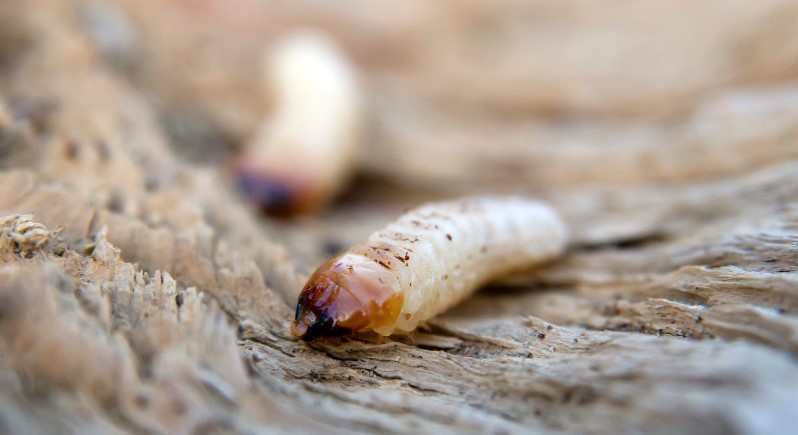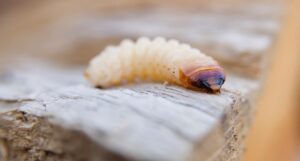Woodworm infestations can cause significant damage to wooden structures, furniture, and other wood items in your home. These small pests burrow into wood, creating holes and tunnels, weakening its structural integrity over time. If you notice signs of woodworm, it’s important to act swiftly to prevent further damage. In this article, we will explore how to get rid of woodworm effectively.
What Attracts Woodworms To Garden?
Woodworms are the larvae of wood-boring beetles, and they thrive in certain conditions. Understanding what attracts them can help you prevent an infestation:
- Moisture: Damp wood is particularly attractive to woodworms, making homes with poor ventilation or high humidity more vulnerable to infestation.
- Softwood: Woodworms often prefer softwoods like pine, spruce, and cedar, although they can also attack hardwoods.
- Untreated Wood: Unsealed or untreated wood is a prime target for woodworms. Wooden items like beams, furniture, and floorboards that lack a protective coating are more susceptible.
- Old Furniture and Structures: Older wooden furniture and structures that have been weakened by age or decay tend to attract wood-boring beetles, providing an ideal environment for woodworm larvae to thrive.
How to Get Rid of Woodworms?
Once you identify a woodworm infestation, there are several methods you can use to get rid of it:
Identify the Affected Area: Look for small round holes (exit holes) in the wood, fine dust (frass) around the holes, and damaged or weakened wood. These are key signs of an active infestation.
Ventilate the Area: Since woodworms are drawn to damp wood, improving your home’s ventilation can help. Use dehumidifiers or fix leaks to reduce moisture levels, which will make the environment less attractive to woodworms.
Use Woodworm Treatment Products: Apply a specialised woodworm treatment to the affected wood, such as a wood preservative or insecticide. These products can penetrate deep into the wood, killing the larvae and preventing future infestations. Ensure the wood is thoroughly treated and follow product instructions carefully.
Heat Treatment: Woodworms cannot survive extreme temperatures. In some cases, heat treatment can kill the larvae inside the wood. This method involves raising the wood’s temperature to around 55°C (131°F) for a period, effectively eliminating the pests.
Freezing Treatment: For smaller items, freezing can be an effective solution. Placing infested furniture or wood pieces in a freezer for at least two weeks can kill woodworm larvae.
Conclusion
Woodworm infestations can be a serious problem if left unchecked, but with early identification and effective treatment, you can rid your home of these destructive pests.
Regular inspections, maintaining dry conditions, and treating your wood with preservatives will help ensure that woodworm infestations are not happening. Don’t hesitate to seek professional assistance from pest control services to eradicate the problem if the infestation is severe.




